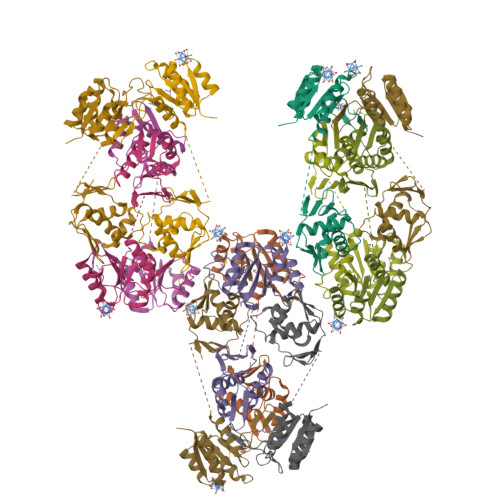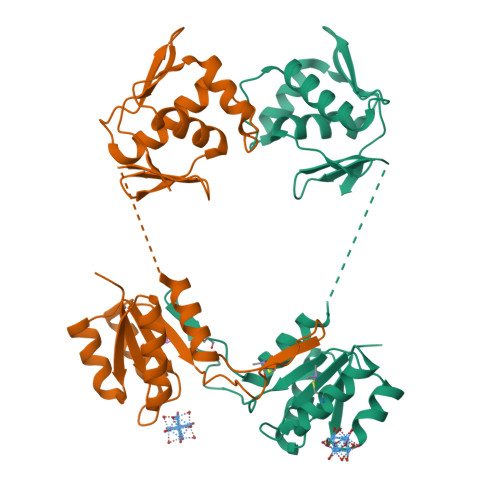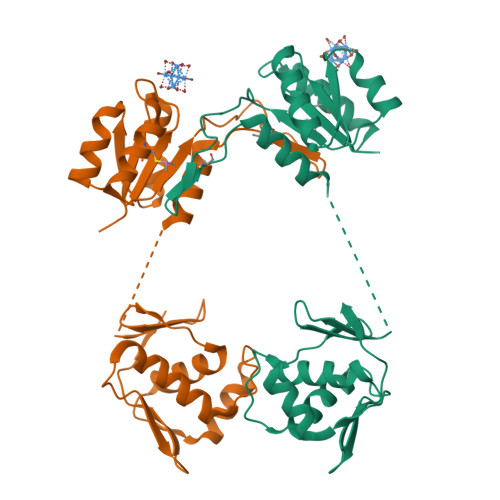The Dimeric Form of the Unphosphorylated Response Regulator Baer.
Choudhury, H.G., Beis, K.(2013) Protein Sci 22: 1287
- PubMed: 23868292
- DOI: https://doi.org/10.1002/pro.2311
- Primary Citation of Related Structures:
4B09 - PubMed Abstract:
Bacterial response regulators (RRs) can regulate the expression of genes that confer antibiotic resistance; they contain a receiver and an effector domain and their ability to bind DNA is based on the dimerization state. This is triggered by phosphorylation of the receiver domain by a kinase. However, even in the absence of phosphorylation RRs can exist in equilibrium between monomers and dimers with phosphorylation shifting the equilibrium toward the dimer form. We have determined the crystal structure of the unphosphorylated dimeric BaeR from Escherichia coli. The dimer interface is formed by a domain swap at the receiver domain. In comparison with the unphosphorylated dimeric PhoP from Mycobacterium tuberculosis, BaeR displays an asymmetry of the effector domains.
Organizational Affiliation:
Division of Molecular Biosciences, Imperial College London, London, South Kensington, SW7 2AZ, United Kingdom; Membrane Protein Lab, Diamond Light Source, Harwell Science and Innovation Campus, Chilton, Oxfordshire, OX11 0DE, United Kingdom; Research Complex at Harwell, Harwell Oxford, Didcot, Oxforsdhire OX11 0FA, United Kingdom.
























